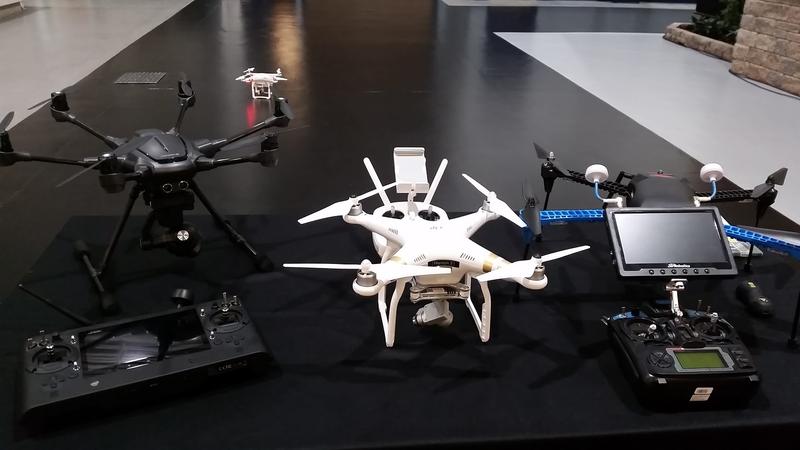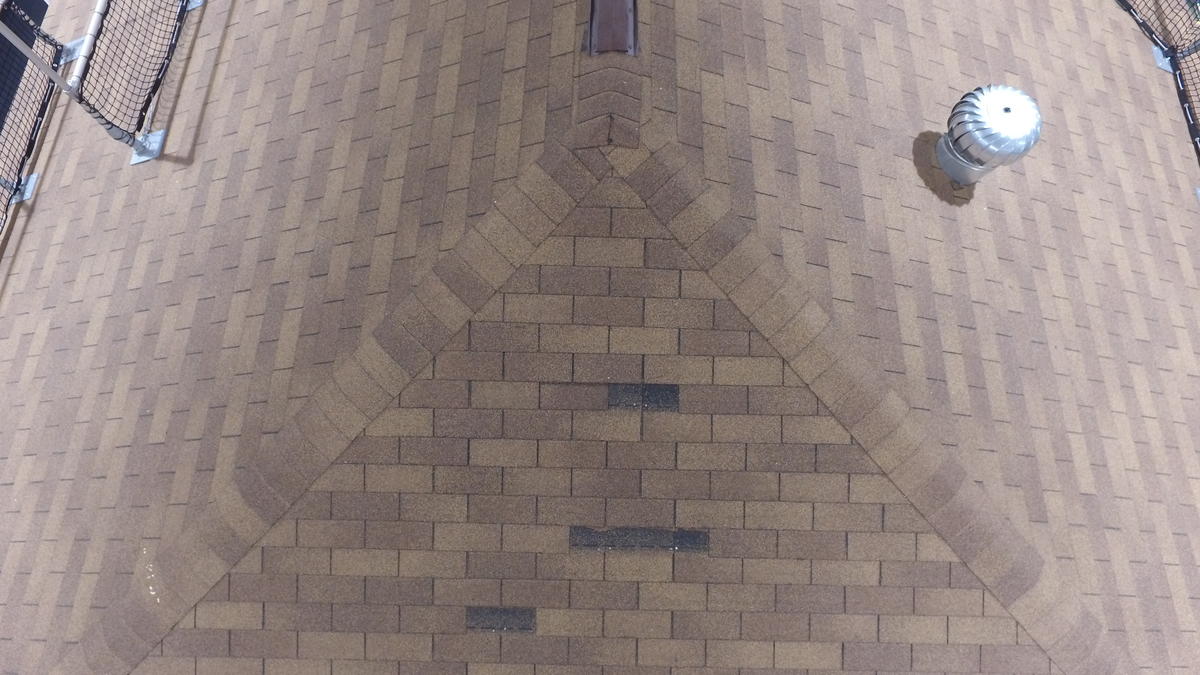Patrick Skahill | WNPR | September 6, 2016

An assortment of drones that could be used in the field to take insurance claims.
New federal rules that make it easier for companies to fly drones could mean big benefits for lots of businesses: news organizations, movie makers looking to get that perfect shot, and one group of workers you might not expect: insurance adjusters.
Patrick Gee works on auto and property claims for Travelers Insurance. We spoke inside a giant warehouse in Windsor, a place called Claim University.
It’s a training ground for insurance adjusters filled with all sorts of property damage: beat-up cars, mock-ups of damaged stores — and in front of us, a giant model house. It’s the full deal: siding, windows, and shingles on the roof.
While you might not think of insurance agents as risk-takers, Gee said they can be.
“Whenever you climb ladders or you get up on a roof, despite well-trained claim professionals with safety standards, there’s always a risk of an accident occurring,” he said.
That’s one of the reasons adjusters want to use drones, like the tiny white one that hovered in front of us, which was no heavier than five pounds.
It quickly zipped up, hovering a few feet over the roof of the model home.
As its four propellers buzzed, the drone snapped high-resolution photos of damage to the model house’s shingles, which were downloaded for analysis on a laptop.

A photograph of the roof captured at Claim Academy in Windsor, Connecticut. The picture was taken by a drone that claims adjusters hope to use in the field in the coming weeks.
Gee said flying drones, also called UAVs, is safer than climbing a ladder — and it’s more efficient.
“Often, if we need to evaluate a roof that’s really complicated and very, very steep, we might need to bring in an outside expert that’s specially trained with all the harnesses and rigging to evaluate damage on steep roofs,” Gee said. “We might actually have to schedule another visit to do that. So by using the UAV, we can assess all the damage the first time — regardless of the complexity of the roof we’re dealing with.”
Up until last month, using drones to assist in insurance claims wasn’t really practical. Companies had to apply for a waiver from the Federal Aviation Administration, and the person flying the drone had to be a certified pilot.
But now those rules have been significantly loosened. Operators don’t have to be pilots anymore — they just need to pass a test. And mostly gone are the days of applying for waivers. Pass the test, obey some rules, keep the drone within line of sight, and it’s good to fly.
Gee said all that could change insurance field operations — much the way smartphones did a while back.
“We expect to have hundreds of drones,” Gee said. “We have about 1,500 people that work with our property claims every day. And we bring more in if we have, let’s say, a large scale event, so somewhere between hundreds and over 1,000 drones would be possible.”

At Claim University in Windsor, Connecticut, drones are tested and adjusters are trained on how to use UAVs in the field to assist in processing insurance claims. Travelers says new FAA regulations have made it much easier to deploy drones.
Gee said adjusters won’t use drones just to fly over damaged roofs. They could survey oil rigs or disaster areas. About a year ago, he said Travelers took the drone out — with a manned aircraft pilot — to test its usefulness at a large factory fire in New Jersey.
“There were chemicals inside and other things,” Gee said. “It would have taken a while to gain access to the property at a level of detail to actually be able to walk through the property. Within a day or two, we were able to fully assess all the damage using the drone.”
Travelers will train its first class of adjusters on using drones at Claim University this week.
